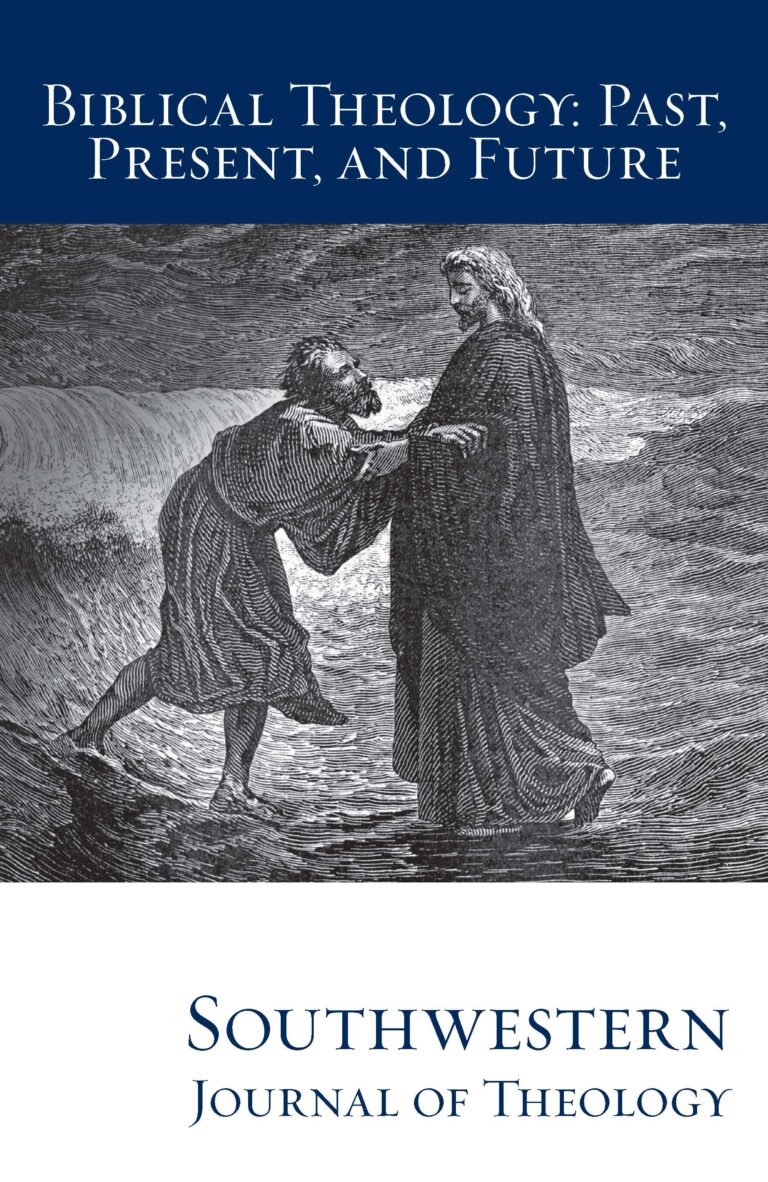
Biblical Theology: Past, Present, and Future (II)
Southwestern Journal of Theology
Volume 56, No. 1 – Fall 2013
Managing Editor: Terry L. Wilder
By J. Todd Billings. Grand Rapids: Eerdmans, 2010. 235 pages. Softcover, $18.00.
J. Todd Billings joins the collection of theologians writing on the subject of theological interpretation. Billings’ purpose for writing is to provide an accessible resource on the topic for students and church leaders who may otherwise remain outside the direct impact of this development at the nexus of biblical studies, systematic theology, and hermeneutics. In accord with Billings’ intent to provide a book which widens the influence theological hermeneutics, his work demonstrates the strengths of readability, explanation of unfamiliar terminology, clear organization and a broad scope rather than focusing on technical discussions.
Billings provides his reader the service of defining theological interpretation on the first page of the introduction. He defines it as “a multifaceted practice of a community of faith in reading the Bible as God’s instrument of self-revelation and saving fellowship” (xii). He sets the interpretation of Scripture in the context of reading for the purpose of faith seeking understanding. Specifically, he asserts that the readers should approach with the expectation that Scripture will provide “an encounter with the triune God himself” such that the Word of God in Scripture is a guide to a life of faith (8). This approach to Scripture is placed in opposition to viewing the Bible as a storehouse of theological building blocks (propositions) on the one hand and a resource for authoritative warrant for the interests of the interpreter on the other hand. The foundation of the correct approach to Scripture is the acknowledgment that reading is a theological task which inescapably involves theological presuppositions. In contrast to historical-critical presuppositions, Billings opts for a reading based upon the rule of faith which “emerges from Scripture itself, but is also a lens through which Christians receive Scripture” and “identifies the center and the boundaries of a Christian interpretation” (29). In the body of the book, Billings provides discussion on the place of general hermeneutics and biblical criticism, the strong role the doctrine of revelation must take in theological interpretation, the impact of the reader’s context, the role of the Holy Spirit in interpretation, the value of pre-modern biblical interpretation, and scriptural interpretation as a spiritual discipline in the life of the church.
The value of the book is that it provides what the subtitle indicates: an entryway to the theological interpretation of Scripture. In doing so, Billings has provided many features helpful to churchmen and students where other works on theological interpretation fall short. One notable (if not altogether simple) feature is that Billings provides a definition for theological interpretation in the introduction to the book that is then explicated in a clear theological progression throughout the remainder of the text. The many strengths of the book include a constructive appreciation of pre-critical interpretation for modern interpretation, a strong connection between biblical interpretation and the spiritual life of the individual and church, a theological perspective on biblical criticism, the manner in which the Holy Spirit conducts a “varied yet bounded” work in interpretation, and the importance of revelation as a theological starting point for Scripture.
There is, however, a point of potential improvement with Billings’ work. Chapter three, entitled “Revelation and Scripture Interpretation,” provides an account of how Scripture relates to the revelation of God. The two consequent attributes of Scripture as revelation that influence interpretation are that Scripture is inspired and is a canonical unity. Billings’ point here follows that approach which argues Scripture is best understood in light of its relationship to God himself. This relationship is mediated through human elements which are specially used by God as his means for communication. Concern arises not in what is emphasized in terms of the Bible’s authority as a function of how God uses it, but in what is omitted, specifically that the text itself is revelation and therefore inerrant and authoritative. The absence of explicit discussion on this point leaves Billings’ reader open to wonder what the bottom line reliability of the Bible has for communicating God’s revelation as opposed to other functional means of communication God may employ. Given Billings’ overarching emphasis that interpretation is for the church, it is likely that he grants the text authority making this omission a point of emphasis, yet such a point deserves mention because of its importance. Overall, Billings has provided an excellent introduction to the benefits offered by theological interpretation that is unique to date in terms of its readability, breadth of discussion, and potential to edify the church.





